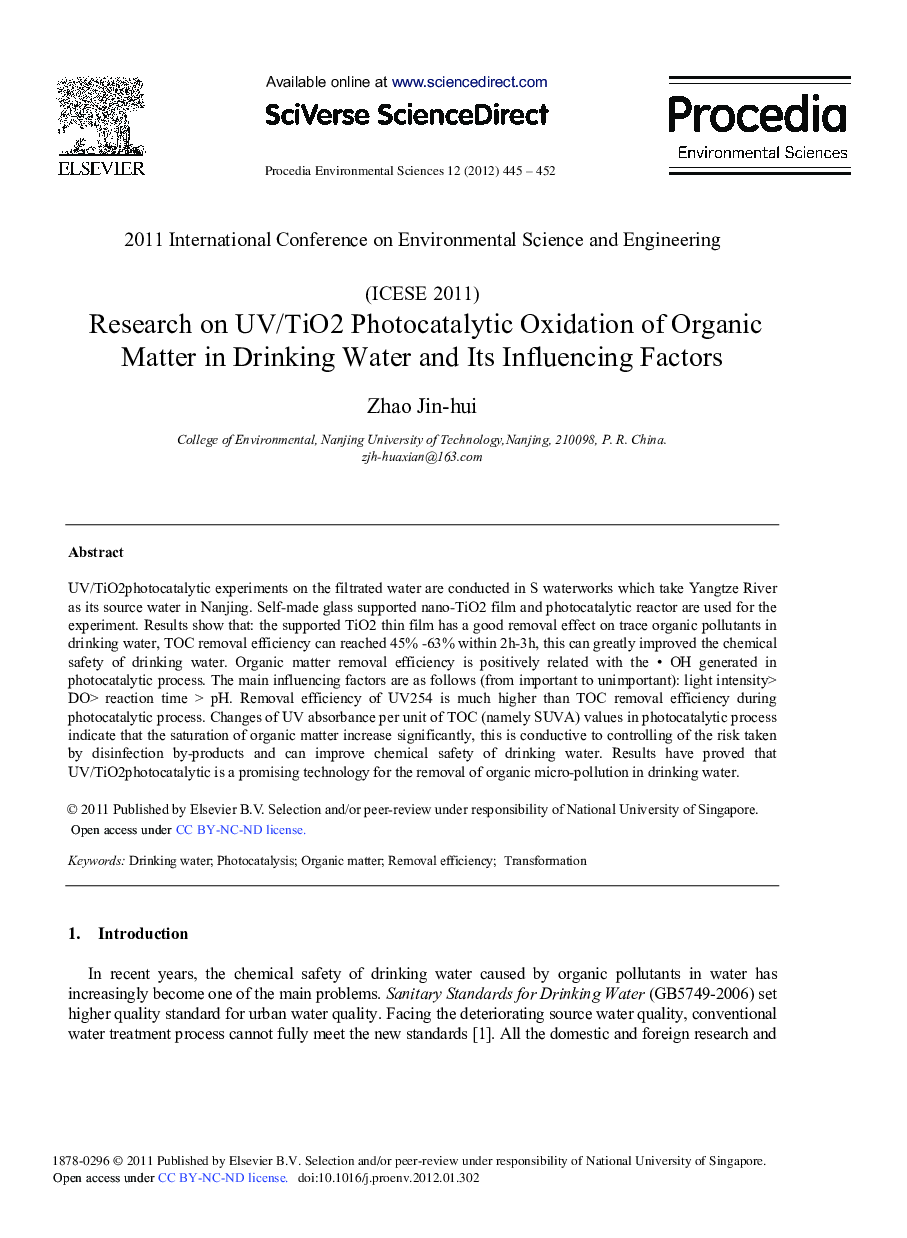| Article ID | Journal | Published Year | Pages | File Type |
|---|---|---|---|---|
| 4403184 | Procedia Environmental Sciences | 2012 | 8 Pages |
UV/TiO2photocatalytic experiments on the filtrated water are conducted in S waterworks which take Yangtze River as its source water in Nanjing. Self-made glass supported nano-TiO2 film and photocatalytic reactor are used for the experiment. Results show that: the supported TiO2 thin film has a good removal effect on trace organic pollutants in drinking water, TOC removal efficiency can reached 45% -63% within 2h-3h, this can greatly improved the chemical safety of drinking water. Organic matter removal efficiency is positively related with the • OH generated in photocatalytic process. The main influencing factors are as follows (from important to unimportant): light intensity> DO> reaction time > pH. Removal efficiency of UV254 is much higher than TOC removal efficiency during photocatalytic process. Changes of UV absorbance per unit of TOC (namely SUVA) values in photocatalytic process indicate that the saturation of organic matter increase significantly, this is conductive to controlling of the risk taken by disinfection by-products and can improve chemical safety of drinking water. Results have proved that UV/TiO2photocatalytic is a promising technology for the removal of organic micro-pollution in drinking water.
